last updated 16th May 2011
Hari Sauri das, Mayapura, IN: 2011 tour - Brisbane - Radharani-shilas
An overnight flight on AirAsia (cheap and comfortable) brought me into the Gold Coast airport on May 6 early morning. Sakhi Rai prabhu, a disciple of HH Indradyumna Swami, picked me up and drove me up to Brisbane to stay with him and his wife and two daughters for the next five days.
He has a nice house where he often hosts visiting preachers
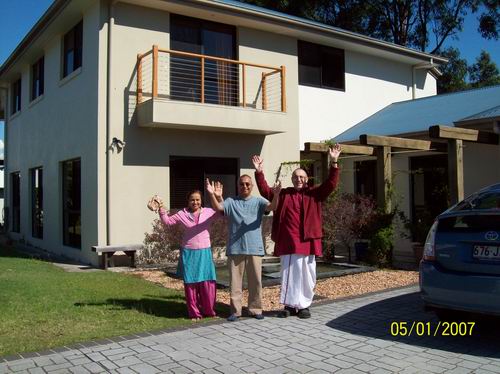
and he and his wife keep up a good home worship program
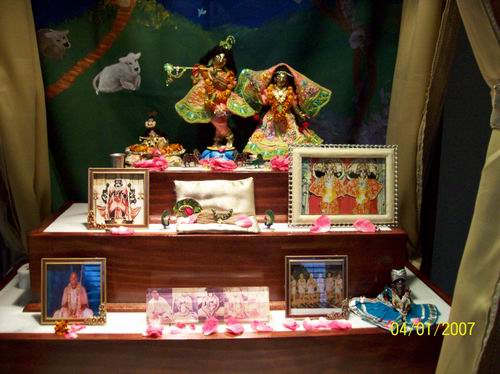
On his altar (just below Radha Krsna) he has a Govardhana-shila. He informed me that a visiting devotee had told him that actually by its color it was in fact a Radharani-shila. I had never heard of such a shila and as far as I knew there were only two authorized shilas for worship-Govardhan and Shaligram. He also was doubtful but since the visitor had consulted with her guru and he had confirmed her suspicion, Sakhi Rai had gone along with it.
I decided to investigate. I had once heard Srila Prabhupada dismiss a devotee’s interest in worshiping a Dvaraka-shila:
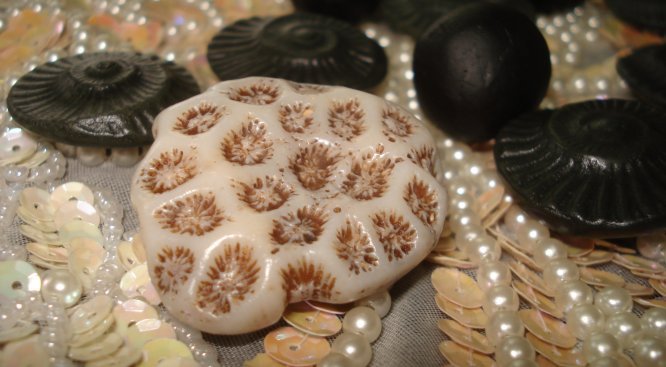
[TD 1] January 6 1976 – Nellore
After the morning walk the sannyasis gathered in Srila Prabhupada’s
room. Yasodanandana Maharaja showed him what he said was a Dvaraka-sila,
a brown-and-white-freckled stone, and asked if it was all right to worship.
“It can be used as paper weight,” Prabhupada said, unimpressed.
When Yasodanandana Swami mentioned that some temples worshipped the
Dvaraka-sila along with the Salagrama-sila, Prabhupada was dismissive.
“That’s all right, but we have no such instruction.”
So what to speak of a ‘Radharani-shila’. I decided to consult with an expert. I emailed Sriman Jayatirtha Carana prabhu, who is the author of the www.salagram.net website. Here’s what he had to say:
My question:
I am staying with a devotee who has a stone from Ucchagram which he was worshiping as a Govardhan shila. Some one then told him by its color and texture it was actually a Radharani shila. I have never heard of such a thing. Do you know anything about this type of Deity? Is there any shastric support for it?
Answer:
Srila Vishvanath Chakravarty Thakur wrote a small work called Vritti Cintamani in which it is mentioned that different parts of Govardhan hill one can find different coloured stones, and the reason being that the different colours represent the different personalities who are either associated with that place or had some pastime in that place, thus leaving their mark in the form of different coloured Govardhan silas.
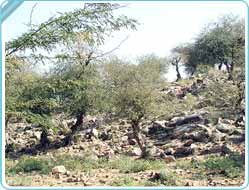

Govardhan is Krishna so technically there are no Radharani silas, but in some places one might find a yellow sila that indicates that there is some association of Radharani there. Some devotees worship those yellow silas in conjunction with the regular Giriraj and call them Radha Giridhari etc.
I have a number of different coloured Govardhan silas, one very black one with red marks the colour of kum kum said to be where the gopis embraced Krishna, the red disappears when the sila is being bathed and then re-appear once dry, very red. I have a yellowish sila from nearby Govinda kund with what looks like a lady’s face carved out, not carved but like cameod not raised but indented, and a pure white crystal sila with tilak marks on in a deep brown colour, and one which is orange the colour of those areas where the little Hanuman shrines are, the same colour and in the shape of a monkey face. Of course there is no such thing as a Hanuman Govardhan sila but because of his association with Govardhan coming there he is remembered and glorified due to his association with Giriraj.
So how I see it is that They are all Govardhan silas and Their colouration identifies Them as being like “tadiya” relation reminding us of those personalities who had their pastimes there.
There are just a few verses that deal with this and its not really even gone into deeply, but yeah it has gathered a cult following among some. I hope this helps.
Shri Vriti Chintamani by Shrila Vishvanath Chakravarti Thakur.
…….the chapter of Govardhana hill will describe the nectar about the Radha, Balarama, and Shyama Shilas.
Text 9
kvacic chila nilamani-pravinah
kutrapi ta marakataika-tanah
tah padmaragah sphatikac ca kaccid
govardhan adrau vidhu-keli-kalpah
The rocks of Govardhana Hill are all precious gems. Some are sapphires, some emeralds, some rubies or sphatika crystals. They provide the perfect backdrop for Lord Shri Krishna’s pastimes.
Text 10
jambunada-grava-varan niriksya
krsnagrajo ‘ram vrsabhanuja dhih
duram prayati sphatikoccayantat
krsnagrajo ‘trety api sapi yatra
If, while walking on Govardhana Hill, Krishna’s elder brother Balarama sees a series of golden stones, He thinks: “….the daughter of King Vrsabhanu must have just now walked before Me,” and He changes course to avoid an awkward situation. In the same way, if She sees a series of crystal stones, She thinks: “…Balarama must have just now walked before Me,” and She changes Her course.
Text 11
krsnas tu jambunada-madhyam eti
muhuh sva-kanta-dyuti-viddha-buddhih
kantapi tasyendramani-cilantam
kanta-bhramac chri-hari-dasa-varye
If, on Govardhana Hill, which is the best of Lord Hari’s servants, Sri Krishna sees a golden stone, He takes it to be His beloved. In the same way, His beloved sees a sapphire (or a blackish blue stone), She assumes it is Her lover.
Text 12
yasyagga-cobha na vilobhayanti
kam va nikuYjesu daricu drstah
krsnasya kanta-nivahasya hara-
dibhih padalaktaka-carvitadyaih
The gopis’ necklaces, ornaments, red foot cosmetic, betelnuts, and other paraphernalia gaze on the beauty of Govardhana Hill’s groves and caves. Who would not become enchanted by the beauty of Govardhana Hill?

I hope that helps.
Trusting this finds you well in every respect, have a great 2011 and a great 525 Gaurabda (Sakabda 1933 – Khristabda (A.D.) 2011-2012 – Vikram Samvat 2068 (Gujarati 2067) and 1418 of the Bangla Era. – Kaliyuga shaka or Krishna samvatsar 5112, Sapath Rishi Samvat 5087 (Saptarshi rishi shaka) – so yeah, Happy New Year )
[end]
So there you go all you shila worshipers, may this increase your enthusiasm for worshiping the Lord in His stone-like forms.
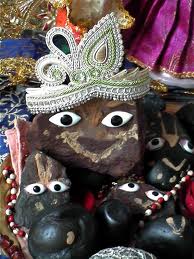

Search here for individual Sevaks and Deities World-wide.
A-B-C-D-E-F-G-H-I-J-K-L-M-N-O-P-Q-R-S-T-U-V-W-X-Y-Z

